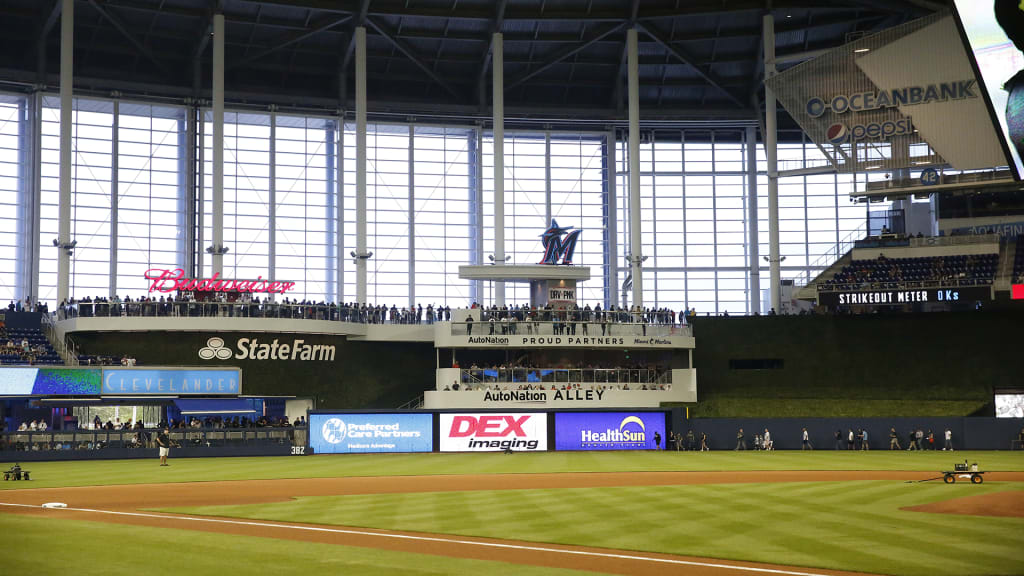
MIAMI -- Marlins Park will have a new playing surface and the ballpark should become more hitter friendly in 2020. The Marlins announced on Wednesday that a synthetic grass surface is being installed, along with the outfield dimensions being adjusted in center and right-center field. The changes were noted in the Marlins' “Beyond the Bases” blog.
Marlins Park, a retractable-roof facility, opened in 2012 and has always had natural grass. The new synthetic playing surface is part of the Marlins’ multiyear corporate partnership with Shaw Sports Turf.
The B1K: Batting A Thousand by Shaw Sports Turf is a dual-fiber turf system comprised of Shaw’s high-performance Strenexe® XD slit film and Bolt® monofilament.
According to the “Beyond the Bases” blog, this system provides excellent durability and functionality by minimizing infill “splashing,” maintaining adequate infill levels across the field. The Bolt fiber provides realistic ball roll, friction and natural grass aesthetics. These characteristics ensure the experiences of the players and fans will be maintained at the highest level.
The Marlins are the third MLB team to install the Shaw Sports Turf product. They join the D-backs, who installed the surface at Chase Field in 2019, and the Rangers, who are adding the turf in their new ballpark -- Globe Life Field -- which opens in '20.
All three ballparks have a retractable roof.
“In going through the process of evaluating the playing surface at Marlins Park in 2019, we set out to find a solution to combat the challenges we have experienced with growing natural grass in Marlins Park,” Marlins chief executive officer Derek Jeter said. “We appreciate the extensive research and new technology from our partners at Shaw Sports Turf to help us deliver a consistent playing field designed to enhance the safety for players and the playability for baseball.”
More than 40 percent of NFL teams are using synthetic-grass playing surfaces, and Marlins Park is used for more than just MLB baseball. Recently, the ballpark hosted the University of Miami and Florida International University college football game on Nov. 23.
Along with the new surface, the outfield walls in center and right-center will be moved closer to home plate. Center field will go from 407 feet to 400 feet, and right-center will be reduced by 12 feet to 387 feet. This is the second outfield adjustment since the ballpark opened. The previous was in 2016.
“As we enhance the playing surface at Marlins Park, we felt it was also appropriate to take the opportunity to evaluate our outfield dimensions,” Jeter said. “We made the decision to adjust the distance of the outfield fence, which will now be more in line with the field dimensions you see across many of today’s ballparks.”
Marlins Park has long been regarded as one of the toughest places to hit. In 2019, the Marlins ranked last in the Majors in homers with 146, with 68 at home.
Since 2012, the Marlins have hit 477 home runs in Miami and 593 on the road, according to STATS INC. Only the Giants (407) have belted fewer home runs in their home ballpark over that span.
The past eight seasons, Miami’s pitchers have allowed 527 home runs at Marlins Park, compared to 755 away.
